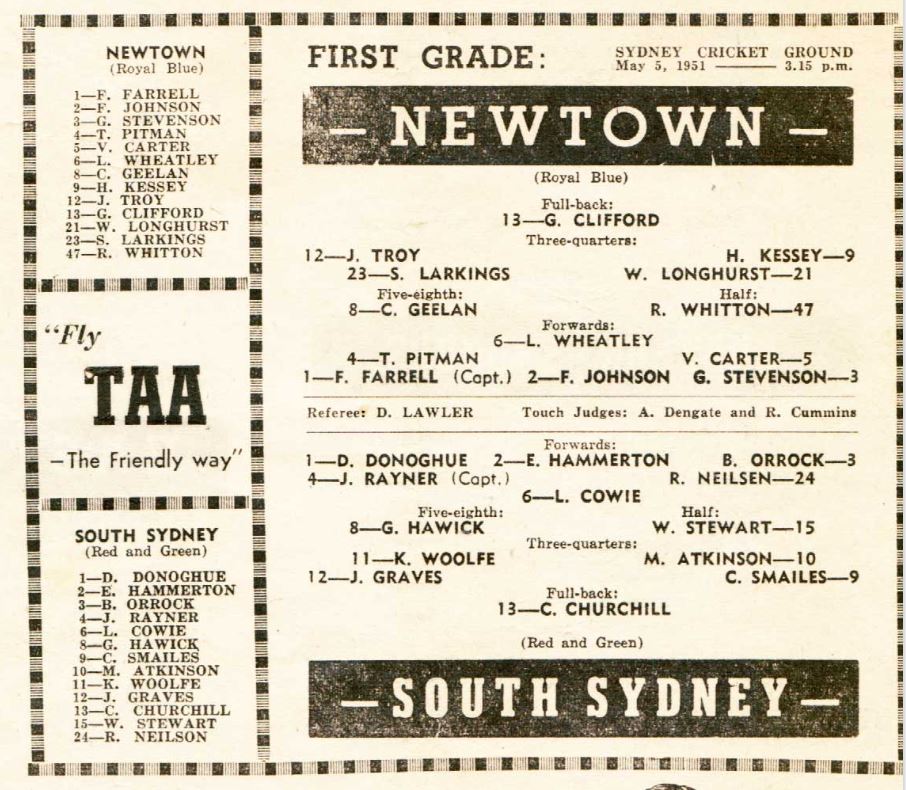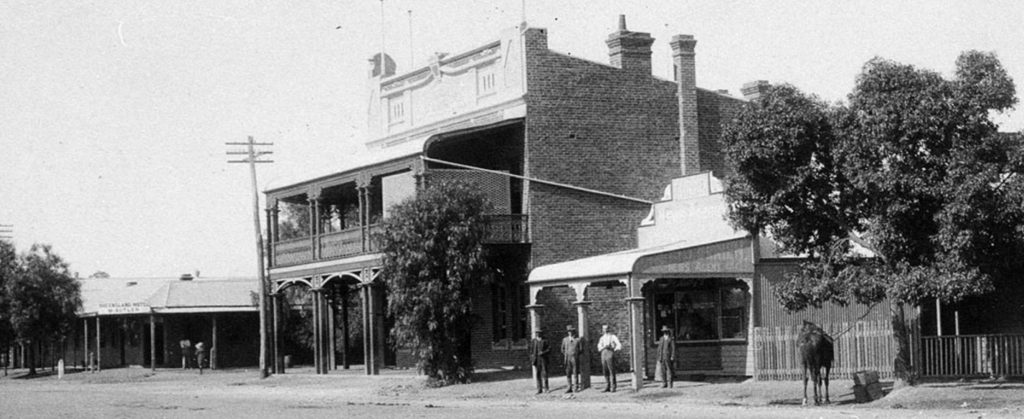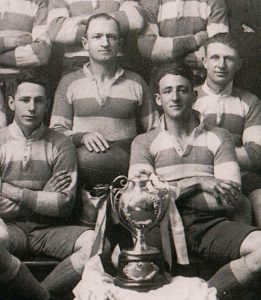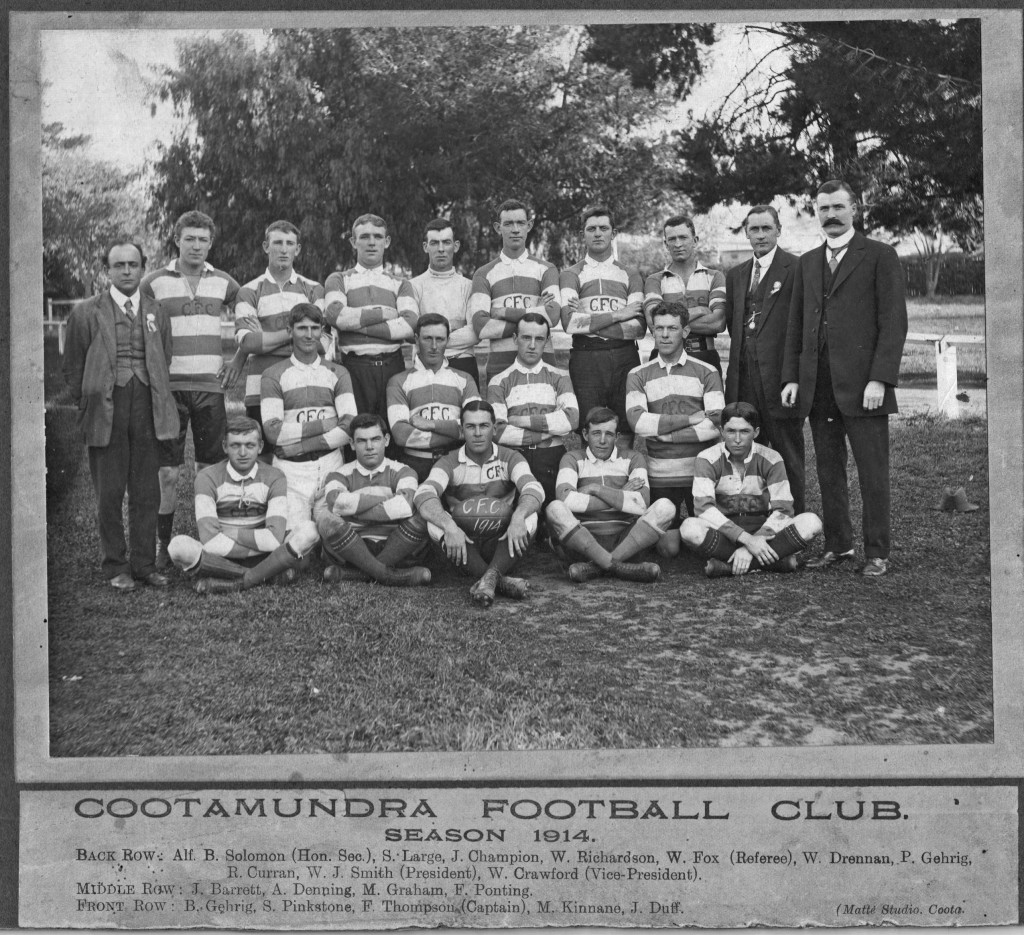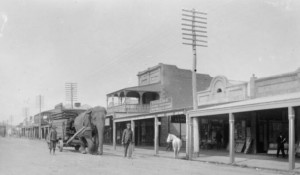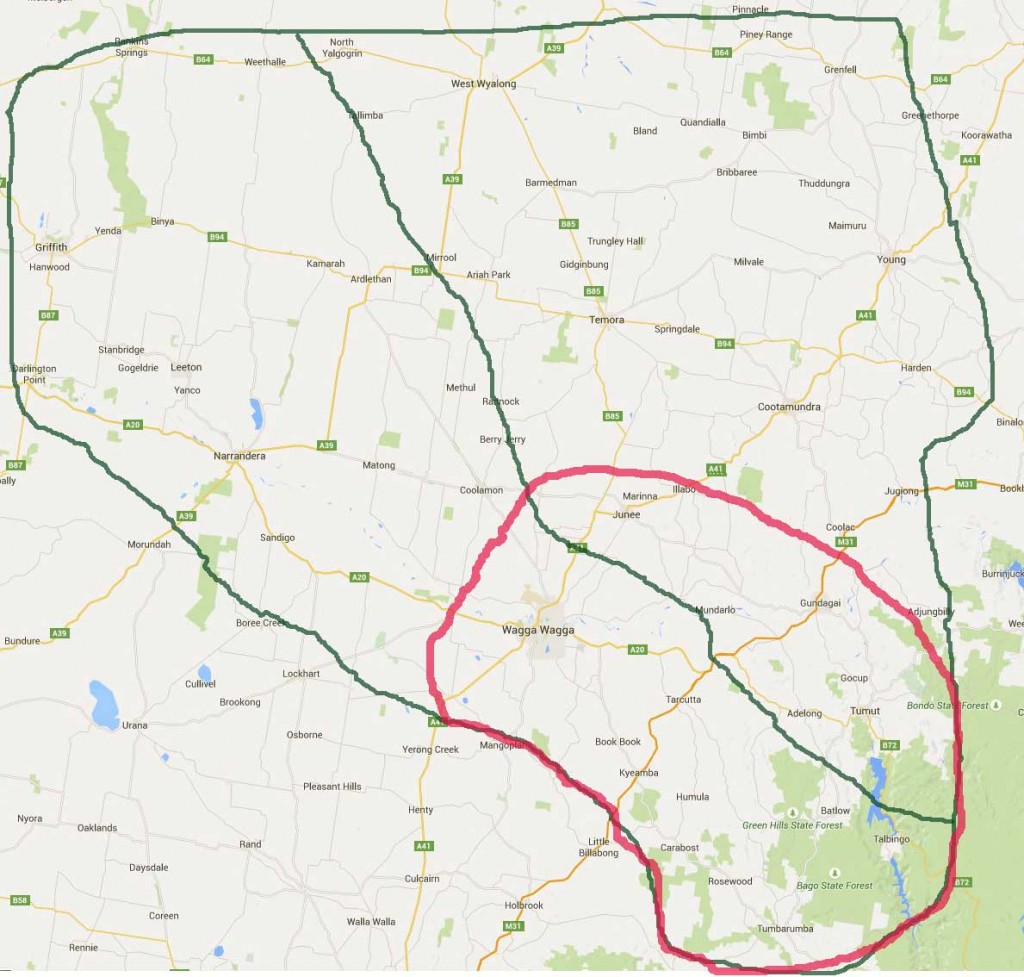Tumut put up a challenge cup in 1920. By 1924 local newspapers had started to call it the now famous Maher Cup. The Sydney press likewise by 1927. The reasons why it became rural rugby league’s most obsessive quest, rather than fade away after a couple of seasons to sit gathering dust, as was the fate of most such trophies offered up by small-town businessmen, is complex. I contend two elements were fundamental and critical – (1) The regional rail network (2) Cootamundra.
This map is designed to illustrate the argument.
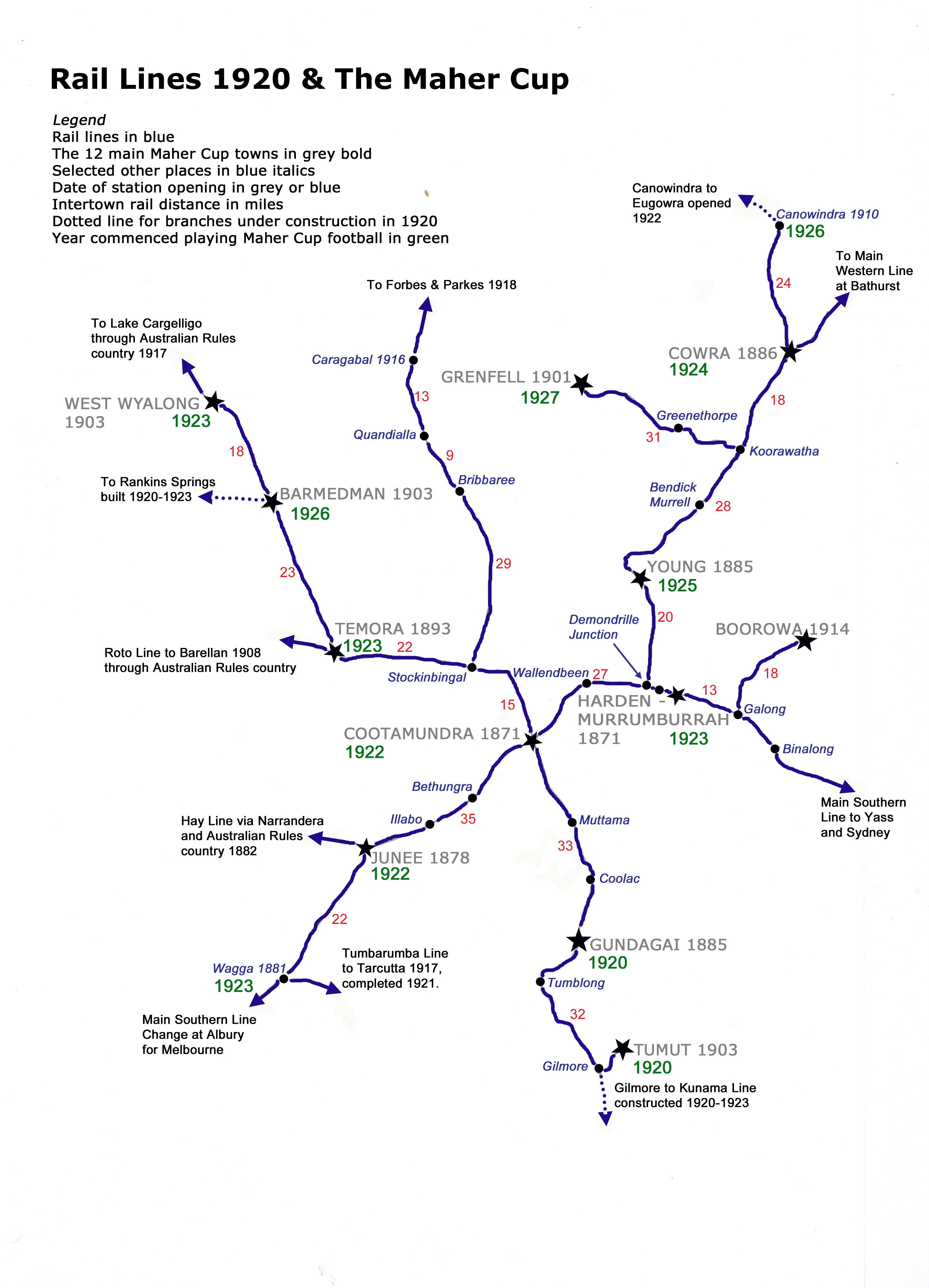
In 1921 only one in 50 people in NSW owned a motor vehicle. While the numbers increased to one in 16 by 1930 [Source: Official Yearbook of NSW 1929-30, p.121], for almost everyone taking the train was the only practical method to travel between towns in reasonable time.
The southwest and the Riverina enjoyed an excellent and still expanding rail network. All the teams that challenged for the Maher Cup in the 1920s were connected to that network. The dates in green on the map illustrate how the more distant teams were quite rapidly drawn into the Maher Cup competition from 1923 to 1927. The latter year could perhaps be designated as that in which the Cup can be said to have become really famous.
If the Cup had stayed at Tumut where it began, or in Gundagai which made the first successful challenge, interest would unlikely have widened so much. It would probably have been sidelined by a trophy from a better located place. That it moved to Cootamundra in 1922, that Cootamundra was THE powerhouse team for the next five years, and that Coota so well promoted it, made all the difference. Situated on the most important intercity rail link in the nation with tentacles running to the Lachlan, deep into the Mallee and beyond the Murrumbidgee, Cootamundra was easy to reach.
Coota remained the centre of Maher Cup country for another 43 years. But by then passenger rail was a mere shadow with almost everyone travelling between towns by car on sealed roads. Wagga, Canberra and Orange grew to become sponge cities soaking up people and services from our towns and villages. When in 1965 the Wagga-based Murrumbidgee Rugby League moved football power further south what was left of Cootamundra’s gravitas went south, as well as any future for the Old Tin Pot.
PS. An earlier post with more reasons:
http://mahercup.com.au/blog/2013/12/12/10-reasons-why-the-maher-cup-was-such-a-success/
